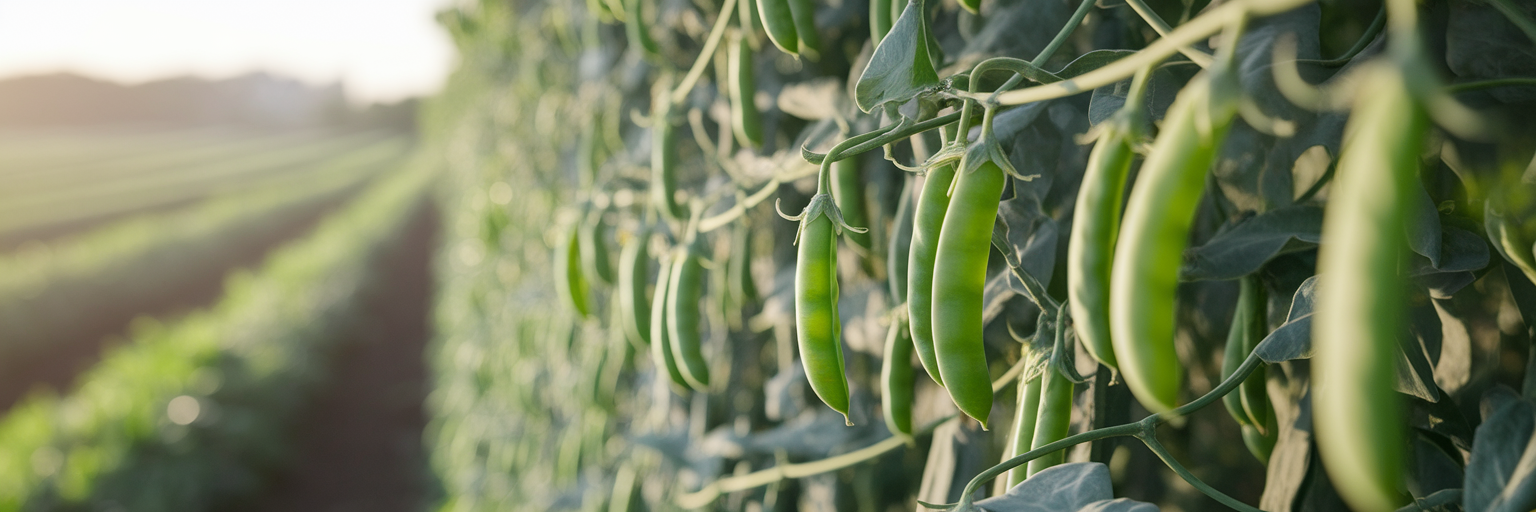The Environmental Price Tag of Your Protein Shake
Many of us are meticulous about tracking our protein intake. We weigh our scoops and log our macros, all in the name of hitting our fitness goals. But have you ever stopped to consider the environmental cost of that daily shake? It’s a question that often gets overlooked in our pursuit of personal health, yet the answer has a significant impact on the health of our planet.
Traditional protein powders, like whey and casein, are derived from dairy milk. While effective for muscle building, their production carries a heavy environmental footprint. The environmental impact of protein from animal sources is tied to three major issues. First, there are the greenhouse gas emissions. Dairy cattle are a primary source of methane, a potent gas that contributes to climate change. This gives every scoop of whey a surprisingly large carbon footprint.
Then there’s the water consumption. It takes an enormous amount of water to raise dairy cows and process their milk into protein concentrate. We’re talking thousands of liters for just a single kilogram of protein. Finally, producing animal-based protein requires vast amounts of land for grazing and growing feed crops. This demand for space often contributes to deforestation and habitat loss. Understanding this isn't about feeling guilty. It's about being informed, so we can make choices that align with both our personal and planetary well-being.
Why Plant-Based Powders Are a Greener Choice

Knowing the environmental cost of traditional protein naturally leads to a follow-up question: what’s the alternative? Fortunately, the answer is both simple and effective. Plant-based protein powders offer a powerful way to fuel your body while significantly lightening your load on the planet. The difference isn't minor. In fact, a study published in Environmental Research Letters found that the plant based protein carbon footprint can be up to 90% smaller than that of animal-based counterparts.
This massive reduction comes from the inherent efficiency of growing plants. Vegan protein powders are made from a variety of sources, including peas, rice, hemp, and soy. This diversity is not only great for creating well-rounded nutritional profiles but also for promoting agricultural biodiversity. The benefits of pea protein, for example, extend beyond its excellent amino acid profile. Peas are nitrogen-fixing crops, which means they naturally enrich the soil, reducing the need for synthetic fertilizers.
With so many great options available, it's helpful to compare them. You can learn more by checking out this guide to the best protein powders we've reviewed to find your perfect match. Choosing plants helps reduce deforestation, conserve water, and protect fragile ecosystems. It’s a direct and positive step toward a more sustainable food system.
| Environmental Factor | Whey/Casein Protein (from Dairy) | Pea Protein (Plant-Based) |
|---|---|---|
| Greenhouse Gas Emissions | High (Methane from cattle) | Up to 90% lower |
| Water Usage (per kg of protein) | Extremely High (~25,000 liters) | Significantly Lower (~2,300 liters) |
| Land Use (per 100g of protein) | High (Pasture and feed crops) | Minimal (Efficient land use) |
Note: Figures are estimates based on data from various lifecycle assessments, including studies cited by the Water Footprint Network and academic journals. They illustrate the general scale of difference between production systems.
Beyond the Plant: The Importance of Sustainable Sourcing
Switching to a plant-based protein is a fantastic first step. But to make a truly meaningful choice, it’s worth looking a little deeper. The reality is that not all plant-based products are created equal. How the ingredients are grown and processed matters immensely. This is where the idea of a truly sustainable protein powder comes into focus, moving beyond just the ingredient list to the entire philosophy behind it.
What is Regenerative Agriculture?
Think of regenerative agriculture as farming that gives back more than it takes. Instead of simply trying to minimize harm, these practices actively work to restore the ecosystem. Techniques like cover cropping, no-till farming, and crop rotation help rebuild soil health, improve water retention, and capture carbon from the atmosphere. It’s a proactive approach that turns farms into engines of environmental renewal.
The Power of Organic Farming
When you see a "USDA Organic" seal, it’s more than just a label. It’s a guarantee that the ingredients were grown without synthetic pesticides, herbicides, or fertilizers. This is crucial for protecting our waterways from chemical runoff and preserving the delicate balance of microorganisms in the soil. These aren't just niche practices; major organizations like the UN's Food and Agriculture Organization (FAO) actively promote these methods for creating more resilient and sustainable food systems.
Why Supply Chain Transparency Matters
How can you be sure a brand is committed to these better practices? The answer lies in transparency. We believe that brands have a responsibility to be open about where their ingredients come from and how they are produced. When a company proudly shares details about its farmers and sourcing methods, it empowers you to make a truly informed decision. Brands committed to these practices often share their stories and insights, and you can explore more articles on wellness and sustainability on our blog.
Your Purchase Power: How Consumers Drive a Greener Market

It’s easy to feel like one person’s choices can’t make much of a difference in the face of global challenges. But that couldn't be further from the truth. Every time you choose a product, you are casting a vote for the kind of world you want to live in. Your purchasing decisions send a powerful signal to the entire market, and that signal is getting louder every day.
According to a NielsenIQ survey, 65% of consumers are willing to pay more for sustainable products. This isn't just an interesting statistic; it's the engine of change. When companies see that sustainability is not just an ethical choice but also a profitable one, they listen. This growing demand for an eco friendly vegan protein creates a ripple effect. It encourages more brands to adopt regenerative and organic farming practices. It attracts investment into new, greener technologies. It can even influence policy, as organizations like the OECD have noted that consumer behavior plays a key role in shaping environmental regulations.
Your choice to buy a sustainably sourced protein powder does more than just provide you with clean fuel. It contributes to a collective movement that is reshaping the food industry for the better. When you're ready to see what a difference conscious sourcing makes, you can explore our full collection of products to find something that fits your lifestyle.
A Practical Guide to Choosing Your Protein Powder
With all this information, you might be wondering how to choose sustainable protein on your next shopping trip. It’s actually simpler than it sounds. By looking for a few key indicators, you can confidently select a product that aligns with your values. Here’s a quick checklist to guide you:
- Look for Key Certifications. Trustworthy third-party seals are your best friend. The USDA Organic logo ensures the absence of synthetic pesticides and fertilizers, while the Non-GMO Project Verified seal confirms the ingredients were not genetically engineered. These certifications take the guesswork out of evaluating a product's claims.
- Do a Little Brand Research. Spend five minutes on the brand’s website. Transparent companies are proud of their sourcing and will have a "Sustainability" or "Our Sourcing" page that details their practices. If a brand is silent on these topics, it might be a red flag.
- Read the Ingredient List. A sustainable product is often a cleaner one. Look for powders with short, simple, and recognizable ingredients. Long lists filled with artificial flavors, gums, and fillers can sometimes indicate a highly processed product with a less transparent supply chain.
Putting these principles into practice is the best way to feel the difference. If you're looking for a great place to start, our Chocolate Vegan Protein is made with simple, transparently sourced ingredients that embody everything we've discussed.
Your Next Step Toward a Greener Shake
Choosing a sustainable protein powder is a simple swap that carries a powerful, positive impact. The great news is that this field is constantly improving. As noted in the journal *Nature Food*, innovations like fermentation are making plant proteins even better in terms of taste, texture, and nutritional value, so you never have to compromise on quality.
Ultimately, every small, conscious choice we make adds up. Switching your daily shake is an empowering act that supports your health, rewards ethical brands, and contributes to a healthier planet for everyone. And once you've found your perfect powder, get inspired with these 3 easy vegan protein recipes you'll actually crave.
If you found this guide helpful, share it with a friend who also cares about building a healthier future!



